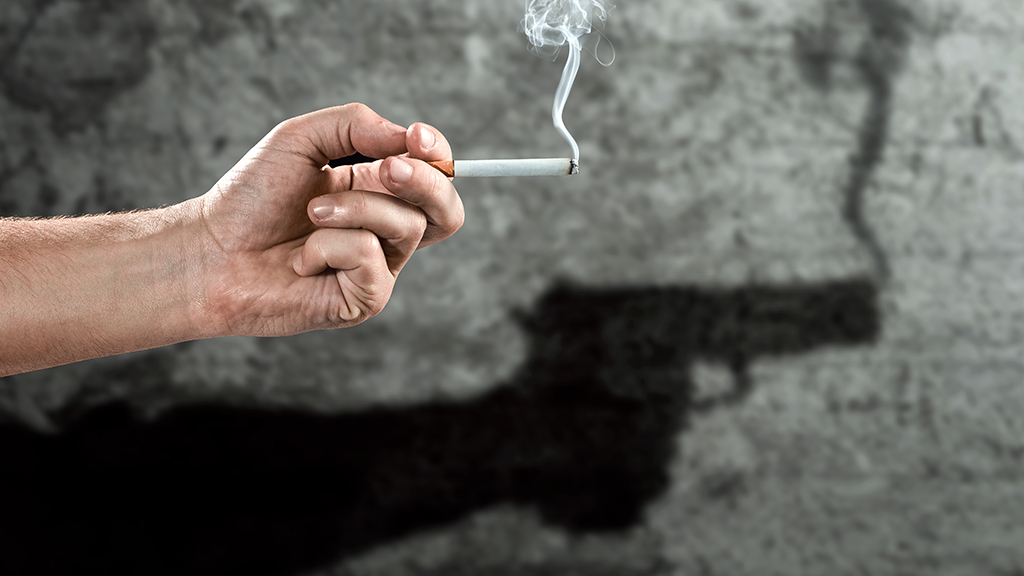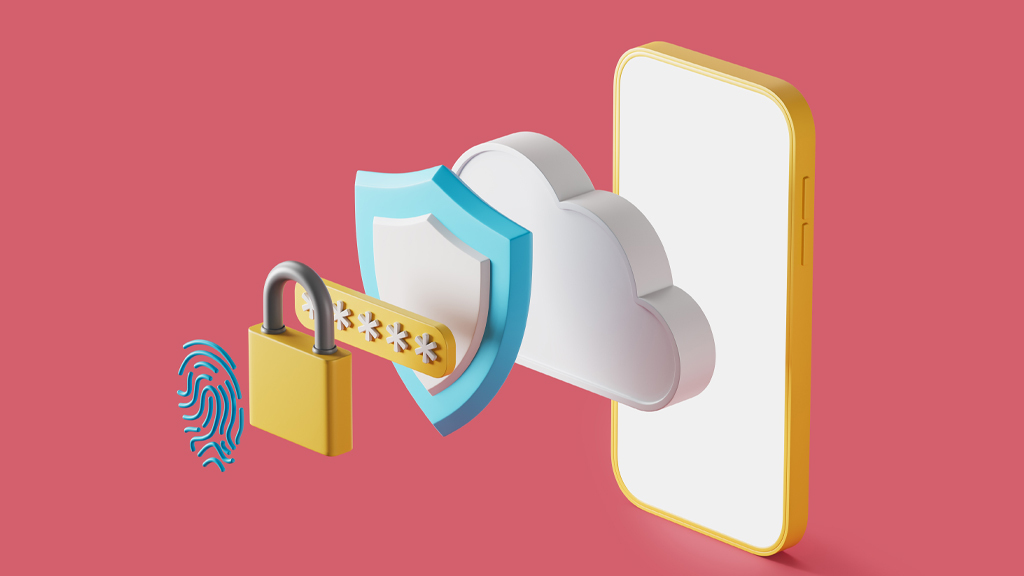Is p53 a Smoking Gun?
How Mutational Signatures Forced Big Tobacco to Change
By Michèle I. Shuster, Joann Mudge, Meghan Hill, Katelynn James, Gabriella A. DeFrancesco, Maria P. Chadiarakou, Anitha Sundararajan

Feature
There and Back: How a Global Pandemic Shaped Youth Programming
Connected Science Learning November–December 2022 (Volume 4, Issue 6)
By Marti Lindsey, Ben Richmond, Alex Benavides, Graciela "Zonnie" Olivas, Kelle Hyland, Leesa Lyons, Lexy Havunen, Mayra Vargas, Brook Moreno, and Bob Mittan

Feature
Fingerprint Spoofing: Exploring Cybersecurity With Limited Technology
Connected Science Learning November–December 2022 (Volume 4, Issue 6)
By Patrick Burton, Kristin Cook, Rob Kelley, Jessica Ivy, and Kevin Thomas

Volume 4, Issue 6
Volume 4, Issue 6
Volume 4, Issue 6
feature
The Constructivist Flipped Classroom
Journal of College Science Teaching—November/December 2022 (Volume 52, Issue 2)
By William H. Robertson
In science education, the value of the constructivist methodology has long been integrated with experiential and hands-on learning while offering a framework for teaching and learning. In recent pre- and future postpandemic times, as various online modalities have been leveraged in the teaching of science, there should be a complementary approach taken to content and experiences in the online environment. Specifically, a hybrid approach that integrates in-person experiences and instruction with online learning opportunities and content delivery, when integrated with constructivism, can provide an appropriate framework for the flipped classroom. By leading with face-to-face active learning opportunities to explore conceptual understanding through practice followed by content delivery primarily through online mechanisms, the constructivist flipped classroom is realized. Within this process, the classroom instructor is provided with a teaching, learning, and curriculum approach designed to effectively implement a student-centered and teacher-facilitated course of study.
In science education, the value of the constructivist methodology has long been integrated with experiential and hands-on learning while offering a framework for teaching and learning. In recent pre- and future postpandemic times, as various online modalities have been leveraged in the teaching of science, there should be a complementary approach taken to content and experiences in the online environment.
In science education, the value of the constructivist methodology has long been integrated with experiential and hands-on learning while offering a framework for teaching and learning. In recent pre- and future postpandemic times, as various online modalities have been leveraged in the teaching of science, there should be a complementary approach taken to content and experiences in the online environment.
feature
Integrating the Concept of Homeostasis Into a First-Semester Anatomy and Physiology Course Through Short Predict-Observe-Explain Activities
Journal of College Science Teaching—November/December 2022 (Volume 52, Issue 2)
By Sammi Moore, Ron Gray, and Jeff Meilander
Historically, undergraduate anatomy and physiology (A&P) has been a challenging course for incorporating conceptual learning techniques due to large class sizes and an emphasis on content and terminology. The project utilized the Predict-Observe-Explain (POE) strategy to create short activities based on real-world scenarios that incorporated A&P course material with the overarching concept of homeostasis. A total of five activities centered around the concept of homeostasis were created for the first semester of an introductory undergraduate A&P course. In this article, we present the design and implementation process for the activities. Following each course unit, an activity was conducted to improve conceptual learning among students. Each POE was organized around a real-world scenario, and students were provided secondhand data to observe and analyze so they could generate evidence-based explanations. Students worked in groups to analyze data, including tables, graphs, schematics, charts, and graphics. We present feedback data collected from students on the utility of the activities. All activities and materials are included and implications are discussed.
Historically, undergraduate anatomy and physiology (A&P) has been a challenging course for incorporating conceptual learning techniques due to large class sizes and an emphasis on content and terminology. The project utilized the Predict-Observe-Explain (POE) strategy to create short activities based on real-world scenarios that incorporated A&P course material with the overarching concept of homeostasis. A total of five activities centered around the concept of homeostasis were created for the first semester of an introductory undergraduate A&P course.
Historically, undergraduate anatomy and physiology (A&P) has been a challenging course for incorporating conceptual learning techniques due to large class sizes and an emphasis on content and terminology. The project utilized the Predict-Observe-Explain (POE) strategy to create short activities based on real-world scenarios that incorporated A&P course material with the overarching concept of homeostasis. A total of five activities centered around the concept of homeostasis were created for the first semester of an introductory undergraduate A&P course.
feature
Student Acceptance of Evolution
Factors That Lead to Change
Journal of College Science Teaching—November/December 2022 (Volume 52, Issue 2)
By Daniel G. Ferguson, Jamie L. Jensen, Adhieu Arok, Seth M. Bybee, and T. Heath Ogden
Acceptance of human evolution seems to be the majority position for the U.S. population; however, acceptance of evolution among conservative Christian groups is low, sometimes below 50%. There are many different reasons for this low acceptance, leading to a significant disconnect between scientific specialists and the general population. This study examined students in an introductory biology class at a large public university. Semistructured in-person interviews were conducted to better understand students’ belief in evolution, or their lack thereof. At the beginning of the semester, 19 of the participants accepted evolution, a number that increased to 29 students by the end of the semester. In contrast, only eight students accepted human evolution at the beginning of the semester, but the number increased to 21 students by the semester’s end. The interviews elucidated three essential factors that can change students’ minds: teaching the evidence of evolution, providing the influence of a role model to reconcile religion and science, and assisting students with overcoming misconceptions about evolution.
Acceptance of human evolution seems to be the majority position for the U.S. population; however, acceptance of evolution among conservative Christian groups is low, sometimes below 50%. There are many different reasons for this low acceptance, leading to a significant disconnect between scientific specialists and the general population. This study examined students in an introductory biology class at a large public university. Semistructured in-person interviews were conducted to better understand students’ belief in evolution, or their lack thereof.
Acceptance of human evolution seems to be the majority position for the U.S. population; however, acceptance of evolution among conservative Christian groups is low, sometimes below 50%. There are many different reasons for this low acceptance, leading to a significant disconnect between scientific specialists and the general population. This study examined students in an introductory biology class at a large public university. Semistructured in-person interviews were conducted to better understand students’ belief in evolution, or their lack thereof.
Freebies and Opportunities for Science and STEM Teachers, November 8, 2022
By Debra Shapiro

Case Study
Students as Science Content Creators and Evaluators
A Case Study of Video Documentary Storytelling in Science Education
Journal of College Science Teaching—November/December 2022 (Volume 52, Issue 2)
By Erica B. Walker and Kelly B. Lazar
Within the context of higher education, the disciplines of science and filmmaking appear disparate, but the importance of storytelling as an integral part of science and research deserves closer examination. Humans have always used stories to share information and convey complex ideas. To those outside science, science communications can be laden with difficult terms and feel exclusive and unrelatable. There has been a recent call to develop science storytelling skills to improve accessibility of science for a general audience. With the rise of video content on social media platforms, short-format videos can reach an untapped audience for science. This case study looks at a unique interdisciplinary course, Science Docs, that encourages students from all areas of study to form a Community of Practice (CoP) that bridges the gap between scientist, storyteller, and science communication evaluator.
Within the context of higher education, the disciplines of science and filmmaking appear disparate, but the importance of storytelling as an integral part of science and research deserves closer examination. Humans have always used stories to share information and convey complex ideas. To those outside science, science communications can be laden with difficult terms and feel exclusive and unrelatable. There has been a recent call to develop science storytelling skills to improve accessibility of science for a general audience.
Within the context of higher education, the disciplines of science and filmmaking appear disparate, but the importance of storytelling as an integral part of science and research deserves closer examination. Humans have always used stories to share information and convey complex ideas. To those outside science, science communications can be laden with difficult terms and feel exclusive and unrelatable. There has been a recent call to develop science storytelling skills to improve accessibility of science for a general audience.
Press Release


